"Dream, Dream, Dream! Conduct these dreams into thoughts, and then transform them into action."
- Dr. A. P. J. Abdul Kalam
"Dream, Dream, Dream! Conduct these dreams into thoughts, and then transform them into action."
- Dr. A. P. J. Abdul Kalam
29 Mar 2024
Embarking on a journey to Bhutan is no ordinary experience. As your airplane gracefully navigates through the mountainous terrain, a breathtaking panorama unfolds, offering a glimpse into the majestic realm of the Himalayas. With Mount Everest, Mt. Kanchenjunga, and the awe-inspiring Mt. Gangkhar Puensum adorning the horizon, every moment of the flight is nothing short of mesmerizing. But it's not just the natural wonders that captivate; it's the skill of the pilots, maneuvering through narrow valleys to reach the elusive Paro International Airport, that adds a touch of adventure to the journey. Situated in a profound valley, the single-runway airport at Paro is encircled by jagged peaks rising to a height of 5,486 meters. It was constructed in 1961 CE next to the Paro Chhu River's edge. The numerous dwellings strewn over the mountainside must be avoided by planes, which must maneuver around them to avoid cutting off the roofs by a few feet. It is regarded as the world's most hazardous landing. The flight into Paro is not for the faint-hearted, but you will catch a glimpse of the famous Tiger's Nest Monastery constructed in 1692 CE. It is a sacred Buddhist temple complex that clings to the side of a sheer cliff “like a gecko” as the Bhutanese say.
Early History ~
The documented history of this geographically isolated country is said to begin in 747 CE when the spiritual leader, Guru Rinpoche, flew from Tibet across the Himalayas on the back of a flaming tigress. He arrived in Paro Valley at Tiger's Nest, which is also known as Paro Taktsang or the Temple of the Guru with Eight Names.
''DRUK YUL IS THE TRADITIONAL NAME FOR BHUTAN, MEANING 'LAND OF THE THUNDER DRAGON.''
Guru Rinpoche vanquished Singye Samdrup, the local demon that was impeding the development of Buddhism, at Tiger's Nest. While much of Bhutan's early history is enmeshed in Buddhist mythology and tradition, Guru Rinpoche was a Buddhist teacher who lived in the eighth century CE and founded the Drukpa school of Buddhism, which is being practiced in Bhutan today. The first thing you notice when you get off the boat at Paro and cross the tarmac is the air, which is sharp, and the houses, which are white-washed stone with painted wood lintels that have an odd mix of old and new. The most striking building is Rinpung Dzong, often known as "the fortress on a heap of jewels," and it is considered to be among the best representations of the characteristic architectural style of Bhutan.
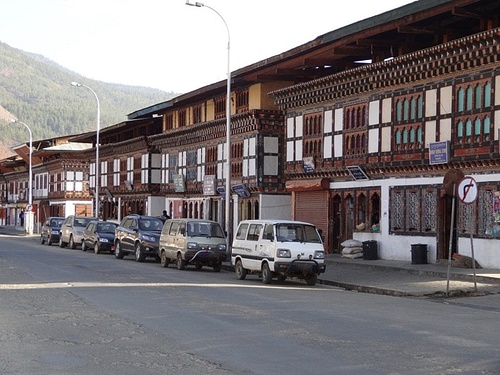
( Source: Google Images)
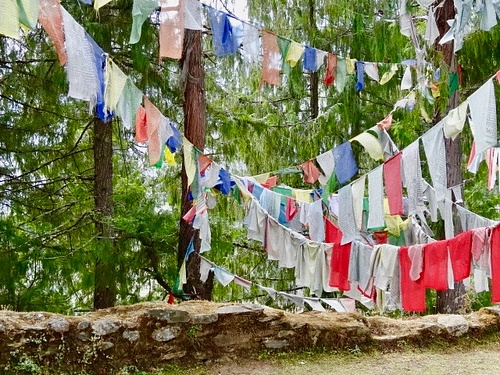
( Source: Google Images)
Dzongs were fortifications erected beside important routes and mountain passes. The Bhutanese army employed them to defend the nation against attacks by Tibet and neighboring India. Dzongs were used as clergy residences and administrative hubs. Over the ages, Bhutan has gone by several names, such as Lho Jong Men Jong (The Southern Valleys of Medicinal Herbs), Lho Mon Tsenden Jong (Sandalwood Country), and Lho Jong (The Valleys of the South).
A Stunning Landscape ~
The gorgeous but meandering trip from Paro to the capital city of "Thimphu" takes around an hour or forty-five minutes, depending on how quickly the people navigate the roads. Prayer flags of various colors are scattered throughout the countryside, waving in the wind. They are made for the deceased or engraved with prayers, mantras, and lucky symbols. They are strung between trees and bridges or hung on long wooden poles. Because the Bhutanese believe that their quiet prayers would be dispersed by the wind at the pace of a horse, prayer flags are known as lung ta, or wind horses. Numerous amazing facts exist regarding Thimphu. It is one of just two Asian capital cities without traffic signals. Norzim Lam is the major thoroughfare, and a policeman with clean white gloves controls traffic. There is only one major street, Norzim Lam, in this small, walkable city. At the top of Norzim Lam, near the traffic circle, there is a route where horses and cows have even been sighted. Horses are frequently seen rushing along Norzim Lam or racing into residential buildings at night. Certain horses have ribbons woven in their tails, signifying that they are lead horses, according to the locals. Since no animal is permitted to be killed or injured, animals are free to roam wherever they like according to Buddhist precepts. However, for the unsuspecting traveler, it can make for a bizarre encounter.
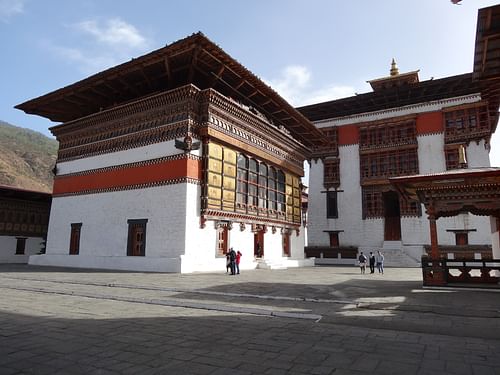
( Source: Google Images)
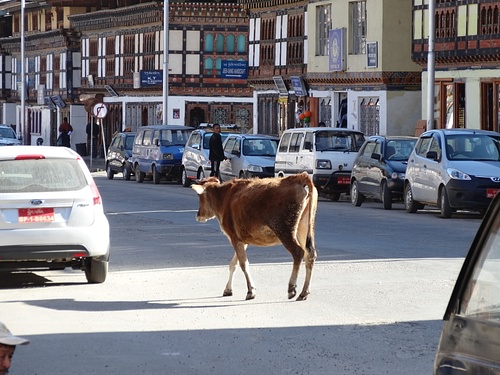
( Source: Google Images)
There are any number of historical sites and places of interest to visit in Thimphu, but as Bhutan is renowned for its brightly-colored and intricately woven textiles, a visit to the National Textile Museum at the top of Norzim Lam is a must.
''BHUTAN HAS 13 TRADITIONAL ARTS & CRAFTS.
In 2001 CE, Ashi Sangay Choden Wangchuck, Her Majesty the Queen, opened the National Textile Museum. Important historical artifacts from Bhutan are on exhibit, including the pearl robe worn by the Buddhist monk Tsamdrak Goenpa, the princess crown worn by Ashi Wangmo's sister, and the original Raven Crown—a headgear crowned with a raven's head—used by the country's rulers. Among the 13 ancient arts and crafts of Bhutan, known as zorig chochom, hand-woven textiles constitute one. These crafts were formally classified under Gyalse Tenzin Rabgay's rule (1638-1696 CE). With designs and patterns denoting social position, wealth, and political rank, fabric has been an essential part of Bhutanese history and culture for generations. Weaving has been a thriving art form in the country. Making clothing is seen as a religious act, and choosing colors is a spiritual endeavor.
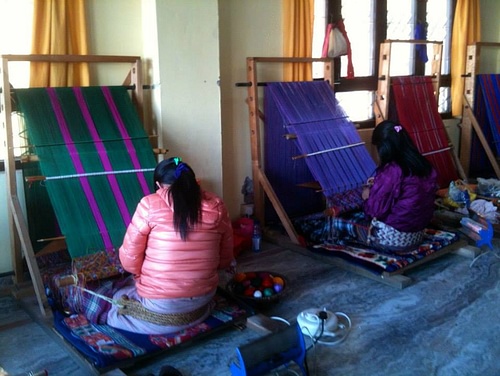
( Source: Google Images)
The visitor discovers the significance of weaving and spinning to the Bhutanese people and their historical memory on the bottom levels of the museum. Displays of ceremonial blankets, looms, apparel, including the national attire, and the fabrics or fibers that are preferred by each area of Bhutan may be found here. For instance, Bura, or raw silk, is favored in Trashigang, whereas Kurtoe and Lhuntse prefer Sesho or exquisite silk. Weaving is a woman's craft, and weaving methods are still passed down orally by generations of Bhutanese women. It is said by the locals that more than half of the population weaves, and you frequently come across groups of five or six women who sit for long periods before pedal looms that have a leather backstrap to support their lower backs. This difficult procedure is referred to by the Bhutanese as "hingtham," or heart-woven.
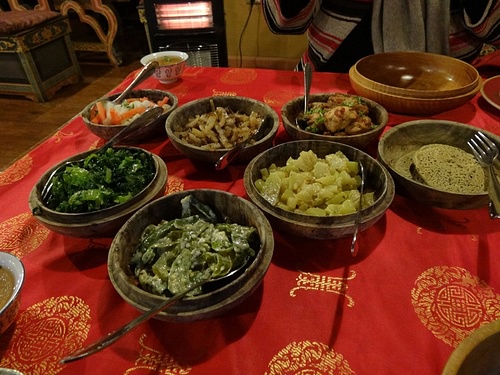
( Source: Google Images)
You may feel thirsty after visiting the National Textile Museum for a few hours. Excellent coffee may be found at Ambient Cafe, upstairs in a building across from Druk PNB Bank on Norzim Lam, and Karma's Coffee, located in the Zhamling Building on Phendey Lam. The national food of Bhutan, ema datchi, must be tried on any trip to this isolated Himalayan nation. It is served with a dish of momo, or spicy dumplings filled with meat, and is cooked with chili peppers and yak milk cheese. Suja, or salted butter tea from Bhutan, is the perfect way to wash it all down. Like everything in this enchanted Shangri-La, this is created with yak butter, tea leaves, and salt and is laced with Bhutanese bliss ~ the Land of the Thunder Dragon.